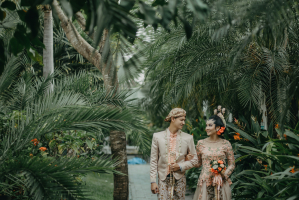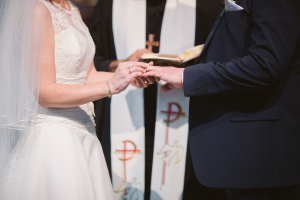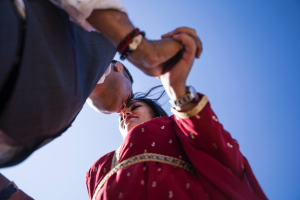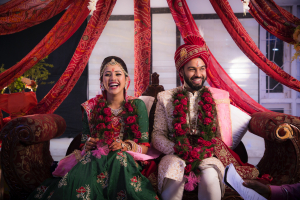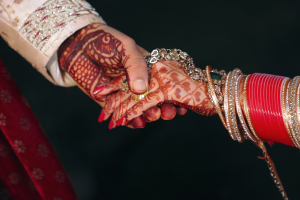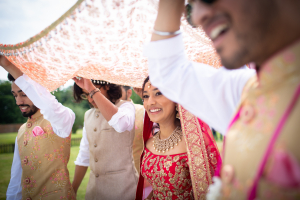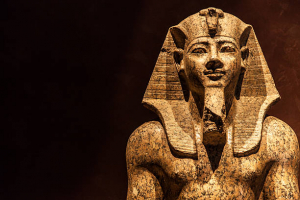Top 10 Interesting Facts about Jain Wedding
Jain wedding is the combination of tradition and profound customs that reflect the Jain way of life. These ceremonies are not just unions of two individuals ... read more...but celebrations that encompass beliefs and rituals. This article will explore these fascinating aspects of Jain weddings.
-
A beloved Jain custom known as Khol Barana serves as the first rite in Jain weddings. They give the bride a silver plate with an auspicious coconut and a monetary gift known as Shagun, in a customary and emotional sign of blessing. In addition to the emotional welcome of the bride into the family, the silver plate also expresses their sincere wishes for a life full of blessings and riches.
On the other hand, as part of Jain marital traditions, the bride's family returns the favor by performing a Tikka or Tilak ceremony. In this tradition, they journey to the groom's home, bearing their own gifts and blessings. This ceremony underscores the mutual respect and unity that lie at the heart of Jain wedding celebrations. It represents the blending in harmony of two families, two destiny, and two sets of traditions and values.
The silver plate, with its sparkling coconut, is passed from one person to another as a concrete indication of the couple's progress toward matrimony, strengthened by the support, love, and blessings of their families. In this conversation, the pair set off on their journey not just as two people but also as a union that is warmly welcomed by family and tradition, creating a route that is full of hope and respect for one another.
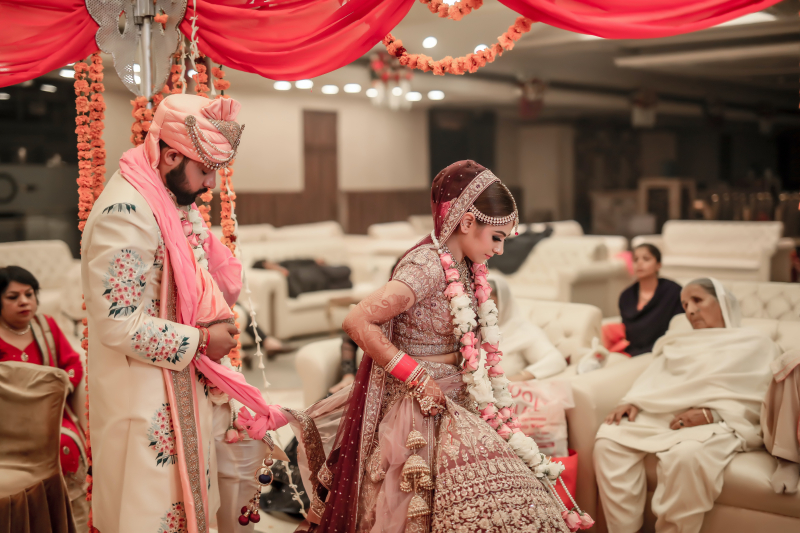
Photo by Alok Verma on Unsplash 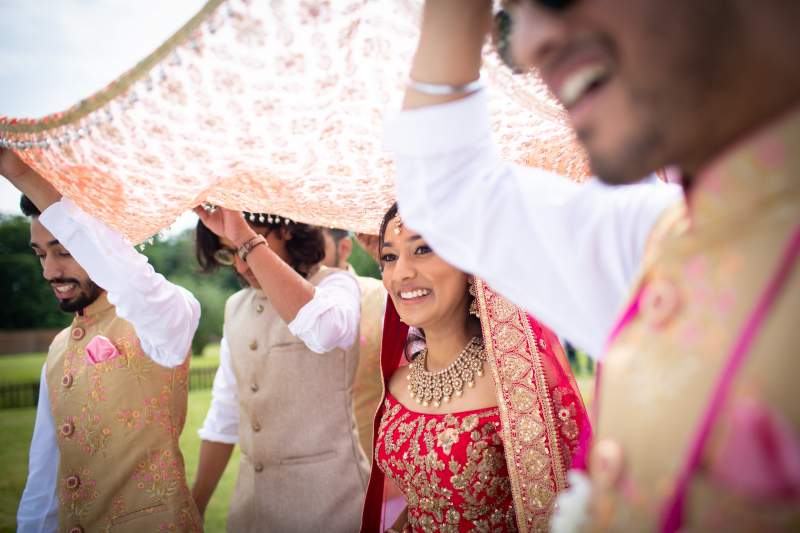
Photo by Raj Rana on Unsplash -
In Jain weddings, a meticulously drafted letter, often formal in its tone, serves as a crucial element of the matrimonial proceedings. This letter is not just a piece of correspondence; it's a sacred document that contains the Muhurat, or the auspicious timing of the wedding. Once prepared, this letter is dispatched to the groom's family, marking a pivotal moment in the wedding preparations.
Upon receiving this letter, the groom's family gathers in a moment of reverence. They open and read it aloud, typically in the presence of close relatives, after performing a small puja to seek blessings and divine guidance. This act transforms the mere exchange of information into a sacred ritual, emphasizing the sanctity of the forthcoming union. It's not merely about scheduling; it's a declaration of intent, an acknowledgment of the auspiciousness of the chosen time, and an affirmation of the commitment to the matrimonial journey ahead.
The concept of a Lagna Patrika Vachan in Jain weddings finds parallels with the Marathi Lagna Patrika, showcasing the universality of certain customs that transcend regional boundaries. These letters, steeped in tradition, reflect the richness of Jain wedding ceremonies, where even the simplest of actions, such as exchanging letters, are elevated to the status of sacred rituals, emphasizing the spiritual depth that underpins the matrimonial journey.

Photo by Andrew Dunstan on Unsplash 
Photo by Debby Hudson on Unsplash -
The Bana Betai ritual, which differs from the more well-known Haldi ceremony in other Indian traditions, becomes a distinctive and beloved feature of Jain weddings. Bana Betai, which has its roots in the extensive Jain legacy, has special significance. Both the bride and the groom participate in a symbolic and holy deed during this time-honored tradition. Besan, often known as chickpea paste, is delicately rubbed on each person's body. This besan represents the removal of impurities, the purifying of their spirits, and the getting ready for the upcoming divine marriage.
A ceremonial wash is performed after this mild application, further emphasizing the purity of the deed. The sacred bath represents both physical and spiritual rebirth, washing away not just the besan but also any remaining pollutants or bad energy. It represents a symbolic entry into the married journey, the letting go of the past, and the beginning of a new chapter.
Bana Betai ceremony serves as an important reminder that Jain weddings are about spiritual development, cleansing, and the profound commitment to a life lived in harmony. The bride and groom set out on a road where love, tradition, and spirituality blend, establishing a link that is not only lovely but also profoundly holy, in the midst of the besan and the purifying waters.
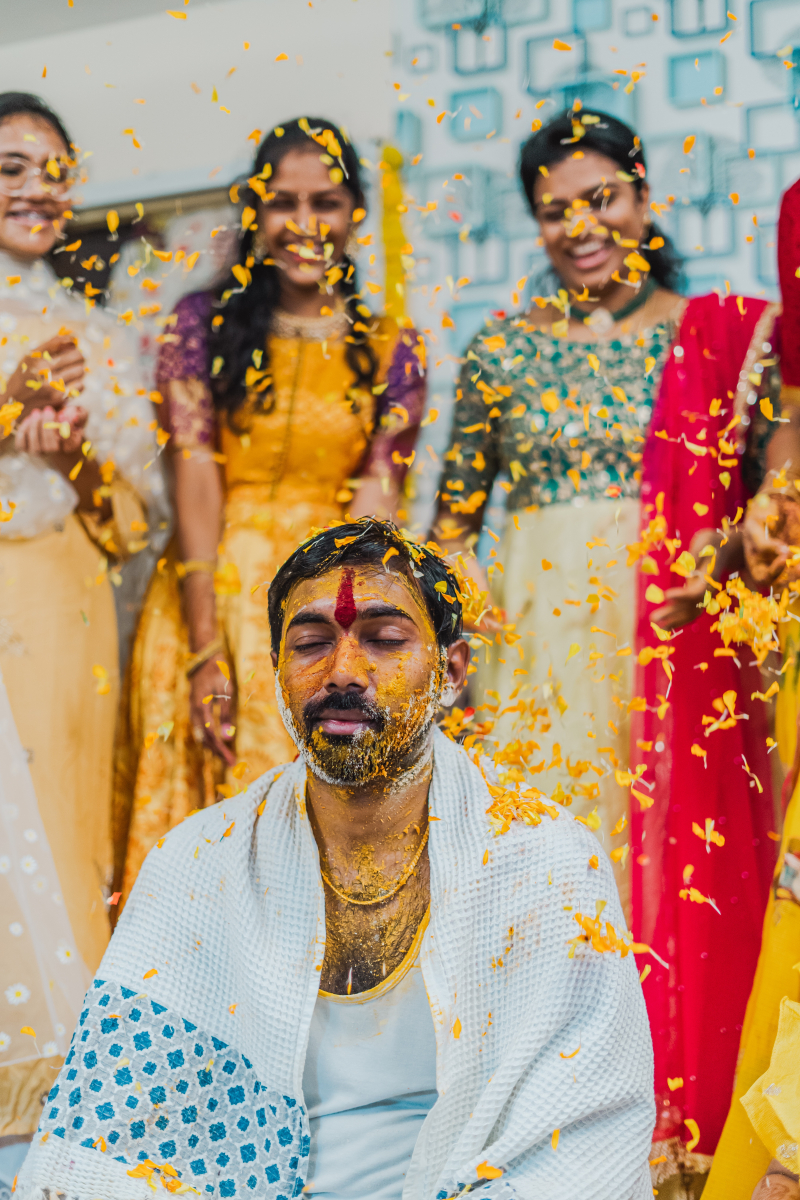
Photo by pixel studios on Unsplash 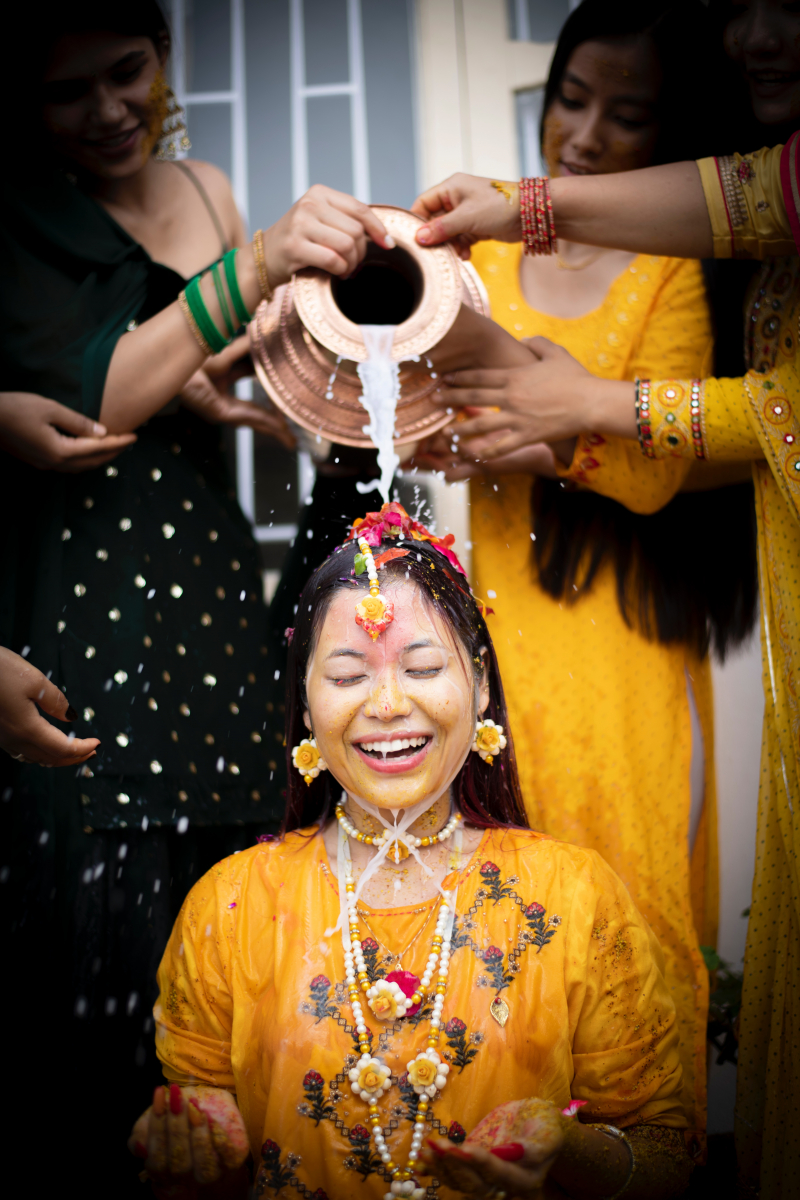
Photo by Ksav Pun on Unsplash -
At the heart of Jain wedding ceremonies, the Mada Mandap ritual is a profoundly significant part of the wedding day's proceedings. The Mada Mandap itself is not just a physical structure; it's a symbol of the sacred union about to take place. It is meticulously designed and arranged, reflecting the richness of Jain culture and traditions. The Mandap is a sacred temple where two souls will come together in the presence of family, friends, and the divine, pledging their love and commitment to one another.
As the Mada Mandap rites take place, a tangible feeling of respect and sanctity fills the space. This rite serves as a striking reminder of the fundamental spiritual component that underpins the marriage of two people. Jain weddings are profoundly based in spiritual ideals. Together with their family, the bride and groom dedicate this location to symbolize the preparation of both the physical and spiritual aspects of the relationship.
The Mada Mandap ceremony is a moment of transition, where the mundane becomes sacred, and the worldly transforms into the spiritual. It symbolizes the opening of a new chapter, not only for the couple but for their families as well. The sanctification process involves various rituals and prayers, invoking blessings and divine grace upon the couple as they embark on their journey together.
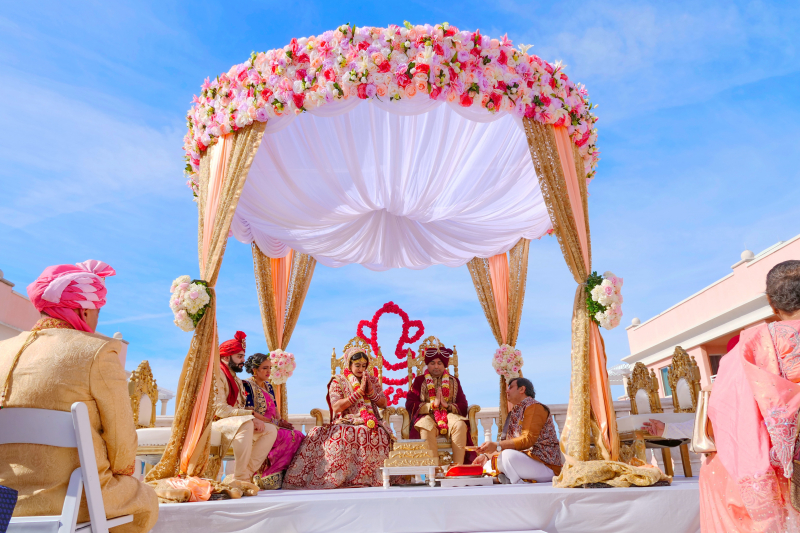
Photo by AMISH THAKKAR on Unsplash 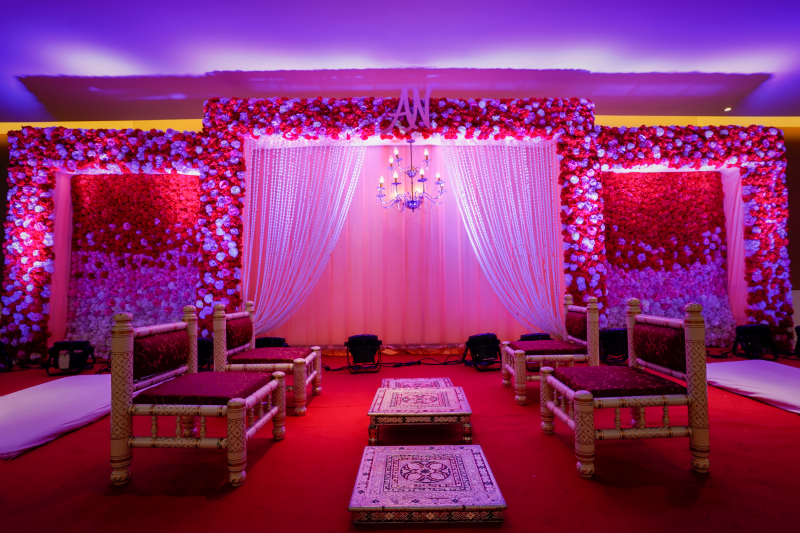
Photo by Vaibhav Nagare on Unsplash -
The Mangal Pheras ritual represents the bride and groom's deep spiritual connection and journey. As they circle the holy fire in this crucial ritual, their vows echoing with each step capture the essence of their dedication. The father of the bride conducts the Kanyadaan ceremony, a touching time where he inserts his daughter's hand into the groom's palms, amid the aromatic incense and the warm glow of the fire. Along with the rice, he also gives them a rupee and 25 paise as a symbolic gesture of his blessings for their happiness and riches in marriage.
A recital of the Mahaveerashtak Strot, an homage to the divine and an appealing request for the couple's continued happiness and harmony, resonates through the air while the Pheras take place. The Mangal Geet is sung by the female attendees to the event, whose joyful and devoted voices fill the room with a lyrical celebration of love and oneness.
The Mangal Pheras ritual signifies not just a union of two individuals but a merging of two families and a commitment to a shared life journey. The Mangal Pheras, with their depth of symbolism and spiritual resonance, underscore the sanctity and beauty of Jain weddings, where tradition, spirituality, and love interweave to create a tapestry of enduring commitment and joyous celebration.
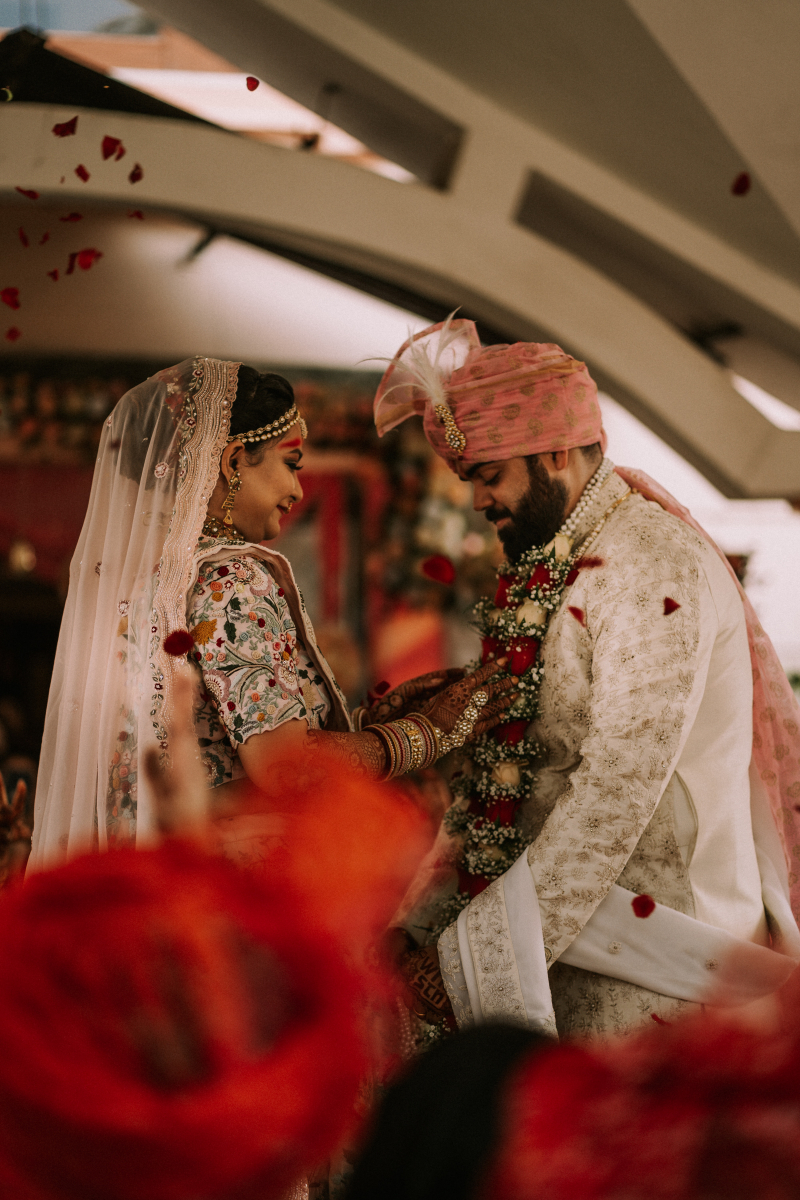
Photo by Rupinder Singh on Unsplash 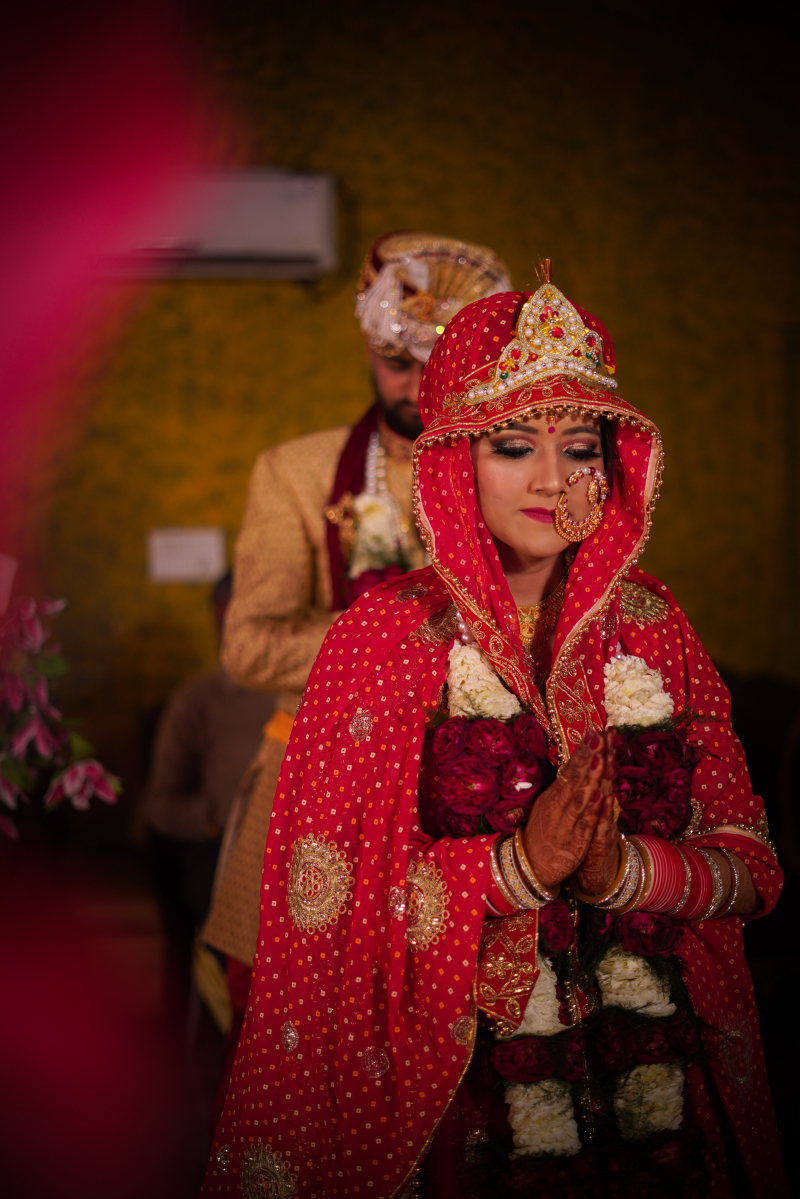
Photo by Aayush(gop) Rawat on Unsplash -
In Jain weddings, the Ghudchadi ceremony takes center stage as a vivid and festive spectacle. This lively ritual commences with the groom's grand initiation, as he embarks on his journey to the wedding venue astride a regal horse, leading the Barat procession. The groom's family and friends join in the celebratory procession, often accompanied by lively music and dancing.
However, before the magnificent parade starts, a moving and symbolic act takes place within the family. When the groom is getting ready to ride his fine steed, the female members of the groom's family perform a crucial part by precisely adjusting his hat. This gesture has profound symbolic meaning, representing the groom's preparation and commitment as he sets off on this important trip in his life. The women apply tilak on the groom's forehead as a sign of blessing and protection. It represents the change from one stage of life to another, from being single to having a loving spouse and from being a treasured son to a beloved husband.
The Ghudchadi ceremony, with its vivacious procession and solemn rituals, showcases the emotions and cultural richness that define Jain weddings—a harmonious blend of tradition, spirituality, and joyful celebration, where every gesture carries profound meaning and every moment is steeped in the anticipation of a beautiful union.
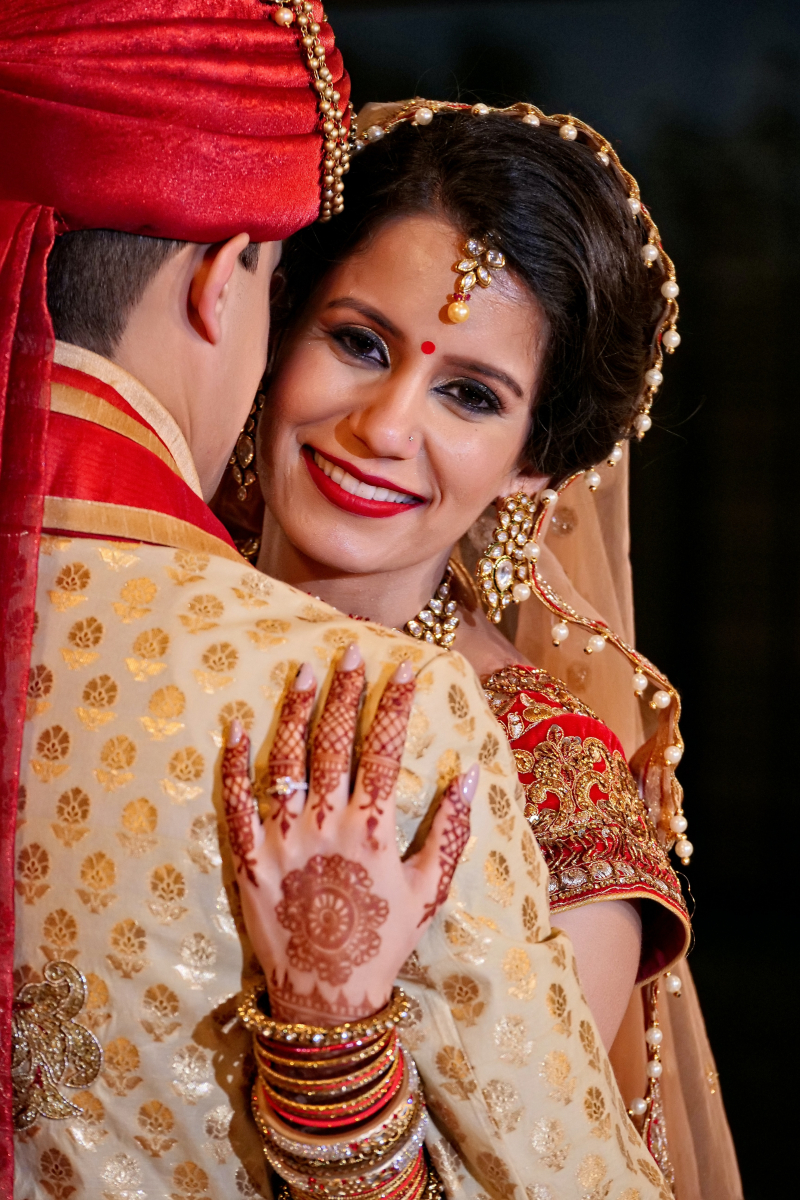
Photo by AMISH THAKKAR on Unsplash 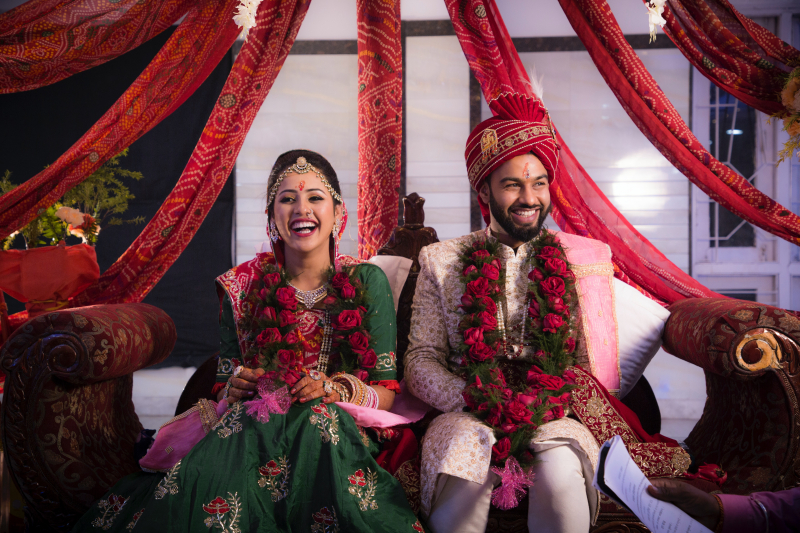
Photo by rajat sarki on Unsplash -
The moment when the bride's parents offer their daughter to the groom is a touching and spiritually significant one in Jain weddings. The parents take the place of the respected guardians and stewards of their daughter's future in this important event. They make a serious pronouncement as their emotions explode with emotion, marking both the actual presentation of their daughter and their passionate support for the upcoming holy marriage.
A deep exchange occurs when the bride's parents entrust the groom with the care of their cherished daughter. In an expression of acceptance and dedication, the groom holds the bride's hand. This symbolic act denotes the joining of two fates, the union of two souls, and the creation of an enduring connection. A sign of wealth can be seen in the bride's hand: a rupee, a quarter, and some rice, which represent blessings for affluence and well-being on their joint life's journey.
Throughout this emotionally charged moment, the pundit, the priest who plays a pivotal role in the wedding ceremony, chants mantras that carry deep spiritual significance. These mantras invoke divine blessings, seek protection, and sanctify the union of the bride and groom. They infuse the atmosphere with a sense of sacredness, reminding all present of the profound commitment and spiritual dimension that underlies Jain weddings.
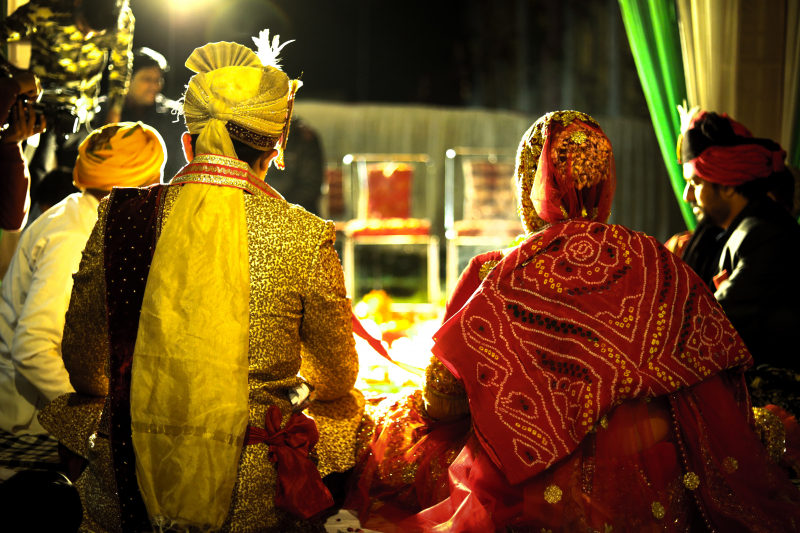
Photo by viresh studio on Pexels 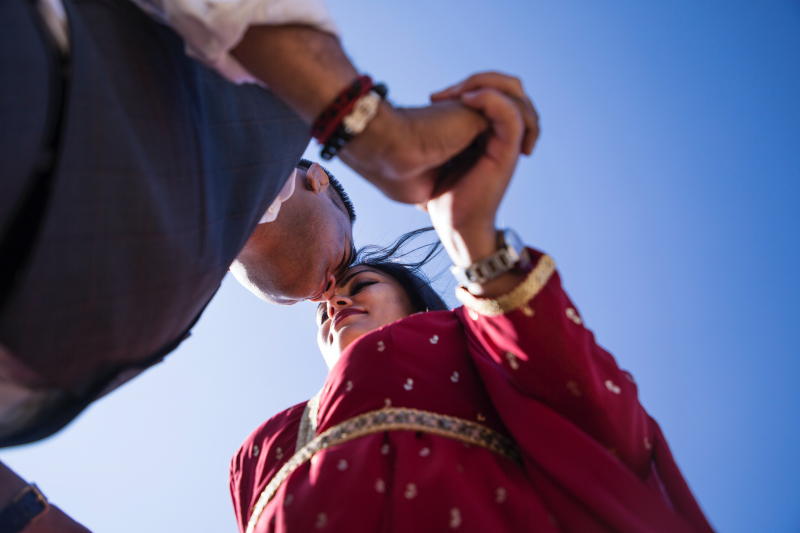
Photo by rajat sarki on Unsplash -
The Granthi Bandhan rite becomes a deeply symbolic and emotionally significant event in Jain weddings. During this sacred moment, a married woman from the family takes center stage as she assumes the role of the sacred bond-weaver. With great care and reverence, she skillfully ties the ends of the bride and groom's clothes together, signifying the unbreakable union they are about to embark upon.
The act also represents the blending of two different families, their principles, and their traditions into a unified principles of devotion and love. It seems as though the bride and groom's futures are delicately woven into a shared future as the knots are tenderly knotted, where their pleasures and pains, ambitions and aspirations, become inexorably connected.
Last but not least, Granthi Bandhan ceremony's delicate threads hold the eternal promise of love, peace, and unity. It stands for the fundamental principles of Jainism, which emphasize the sanctity of marriage as well as the significance of kinship ties and cultural legacy. When the Granthi Bandhan is celebrated, it serves as a symbol of the enduring customs that have united generations. Besides, it is also a reminder of the profound spirituality that underpins married couples' journeys as they begin their wonderful life together.
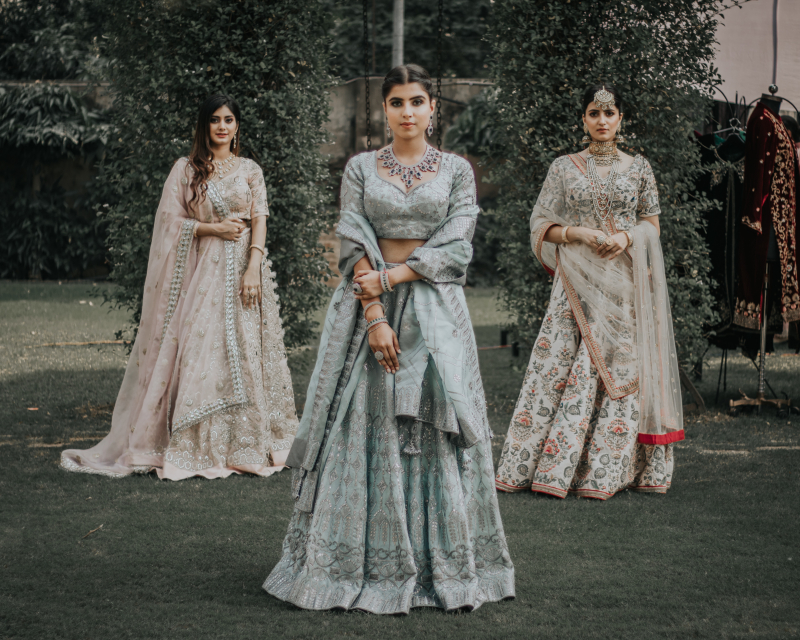
Photo by Dollar Gill on Unsplash 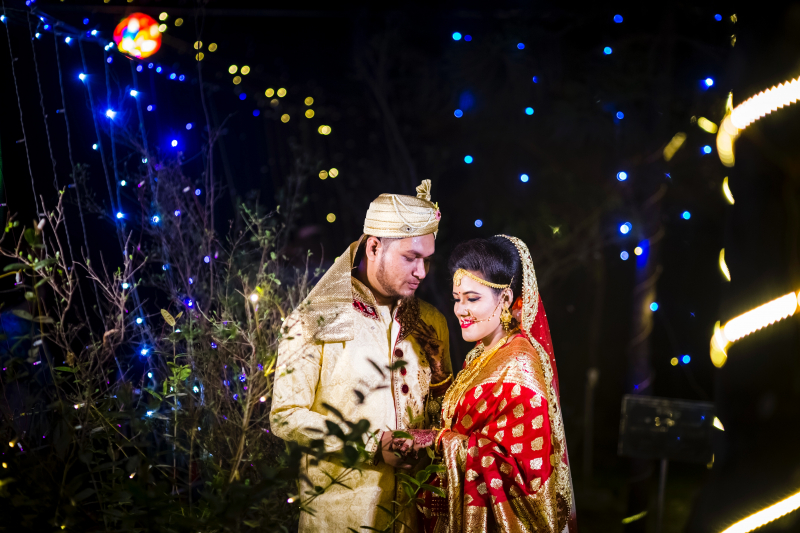
Photo by Abir Shahriar on Pexels -
The Pheras, the most important part of Jain wedding customs, take place at a carefully chosen time, believed to be the luckiest for the couple. In these rounds, a meaningful symbol emerges: during the first Phera, the bride walks ahead of the groom, representing her role as the initiator of their life together. Then, for the next three rounds, the groom leads, signifying his commitment to guide and protect their journey as a couple.
During these important rounds, the priest, a respected figure in the ceremony, recites the Mahaveerashtak Strot, asking for blessings from the spiritual world to bless and sanctify the union. The melodious words of the Mahaveerashtak Strot fill the air, adding a sense of holiness and respect to the ritual. Simultaneously, the gathered guests, friends, and family members become active participants. Their voices raised in harmonious unison, singing the Mangal Geets, celebratory songs that fill the atmosphere with a sense of joy and jubilation.
As the Pheras culminate, the couple proceeds to take the seven vows of marriage, known as the "Saat Vachan." These vows capture the core of a lifelong partnership, promising strong commitment, love, and support through life's ups and downs. They commit to following important Jain values like truth, non-violence, and spiritual growth.
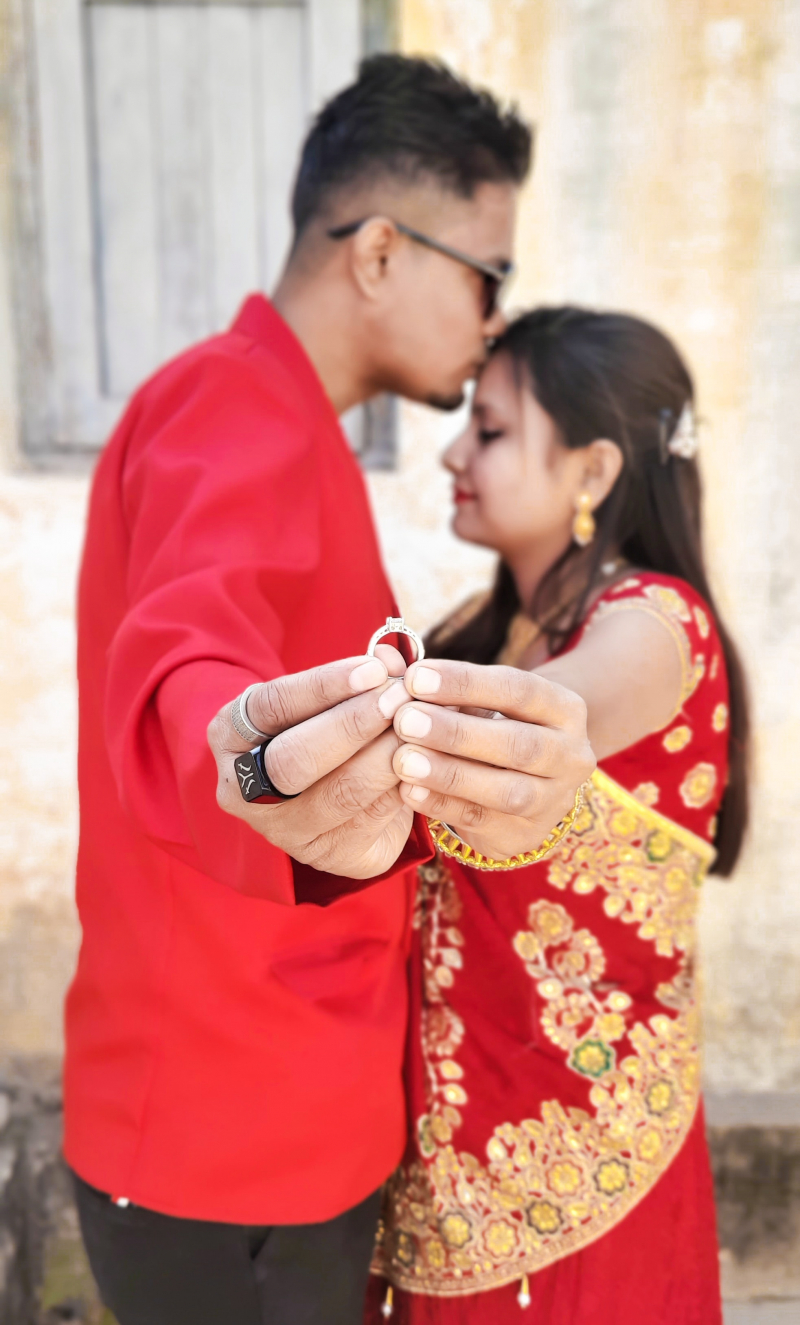
Photo by Farid A Qureshi on Unsplash 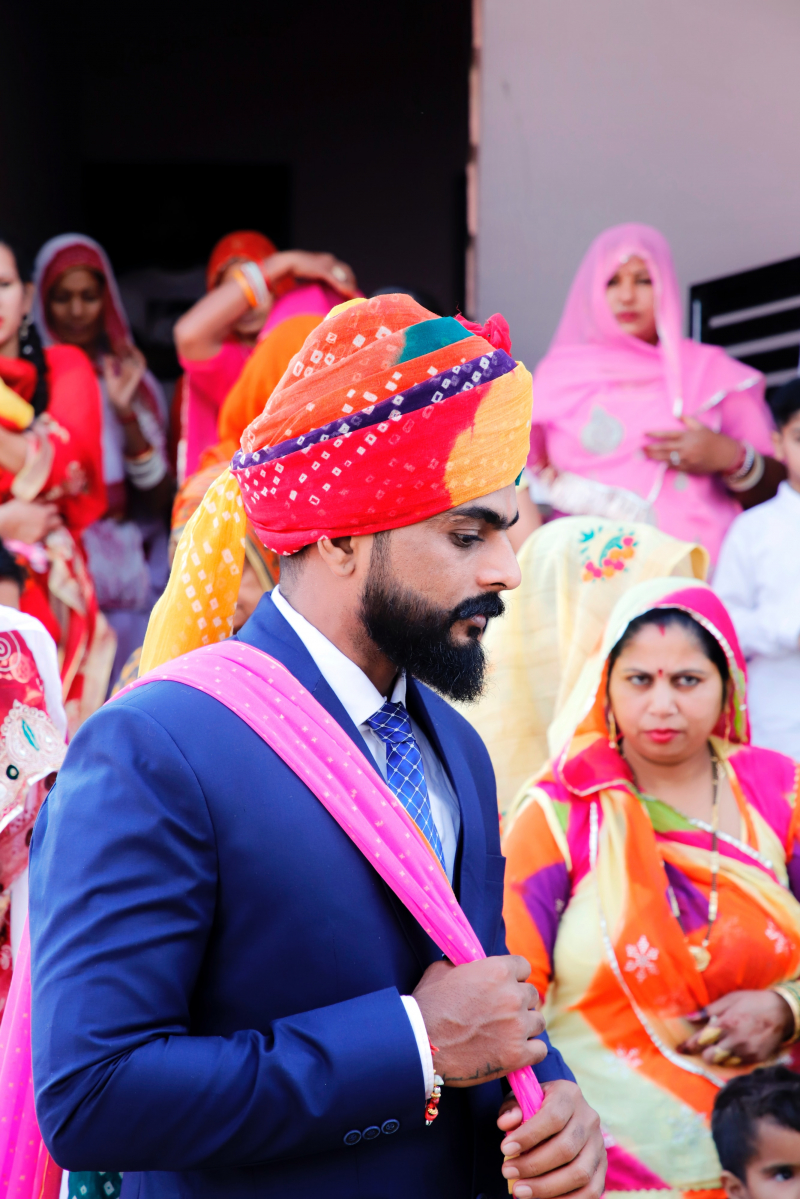
Photo by Manoj Chauhan on Unsplash -
In Jain wedding customs, one particularly unique and heartfelt post-wedding ritual stands out: "Jina grahe dhan arpana." After the wedding ceremony, this custom takes place as a heartfelt show of appreciation to the divine. This appreciation is for the successful completion of the wedding ceremonies and the benefits showered upon both families.
In Jina grahe dhan arpana ritual, the newlywed couple, accompanied by their respective families, embarks on a pilgrimage to a Jain temple. They do a highly meaningful act of generosity there, within the sacred boundaries of this holy sanctuary. As they go on their trip together, they voluntarily give alms to the less fortunate, frequently in the form of food, clothes, or other necessities. This acts as a sign of their dedication to compassion and selflessness.
This generous act is a way to thank the divine for blessing their marriage. It shows that their marriage has deep spiritual meaning, not just worldly importance. This tradition reminds them of the importance of compassion and service, central in Jainism. In this act of giving, they find a deeper connection not only to each other but also to their faith and the larger community, setting the tone for a life together characterized by love, compassion, and spiritual growth.
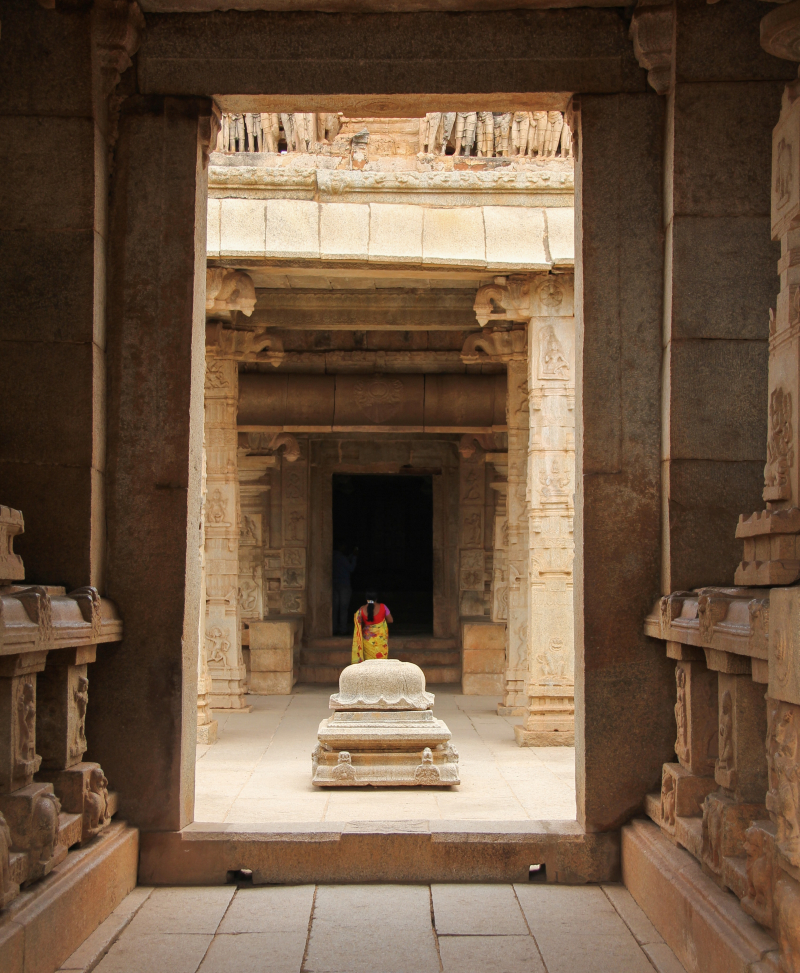
Photo by Laurie Byrne on Unsplash 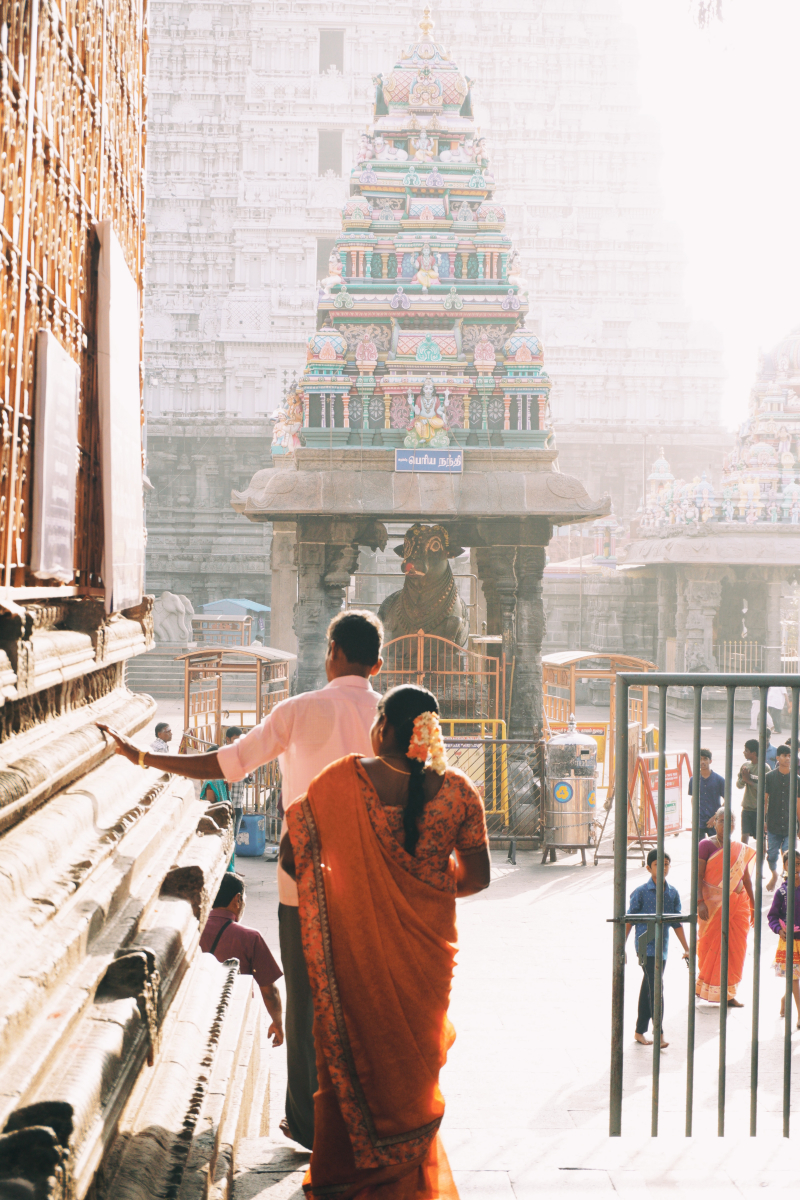
Photo by Thiru N on Unsplash












